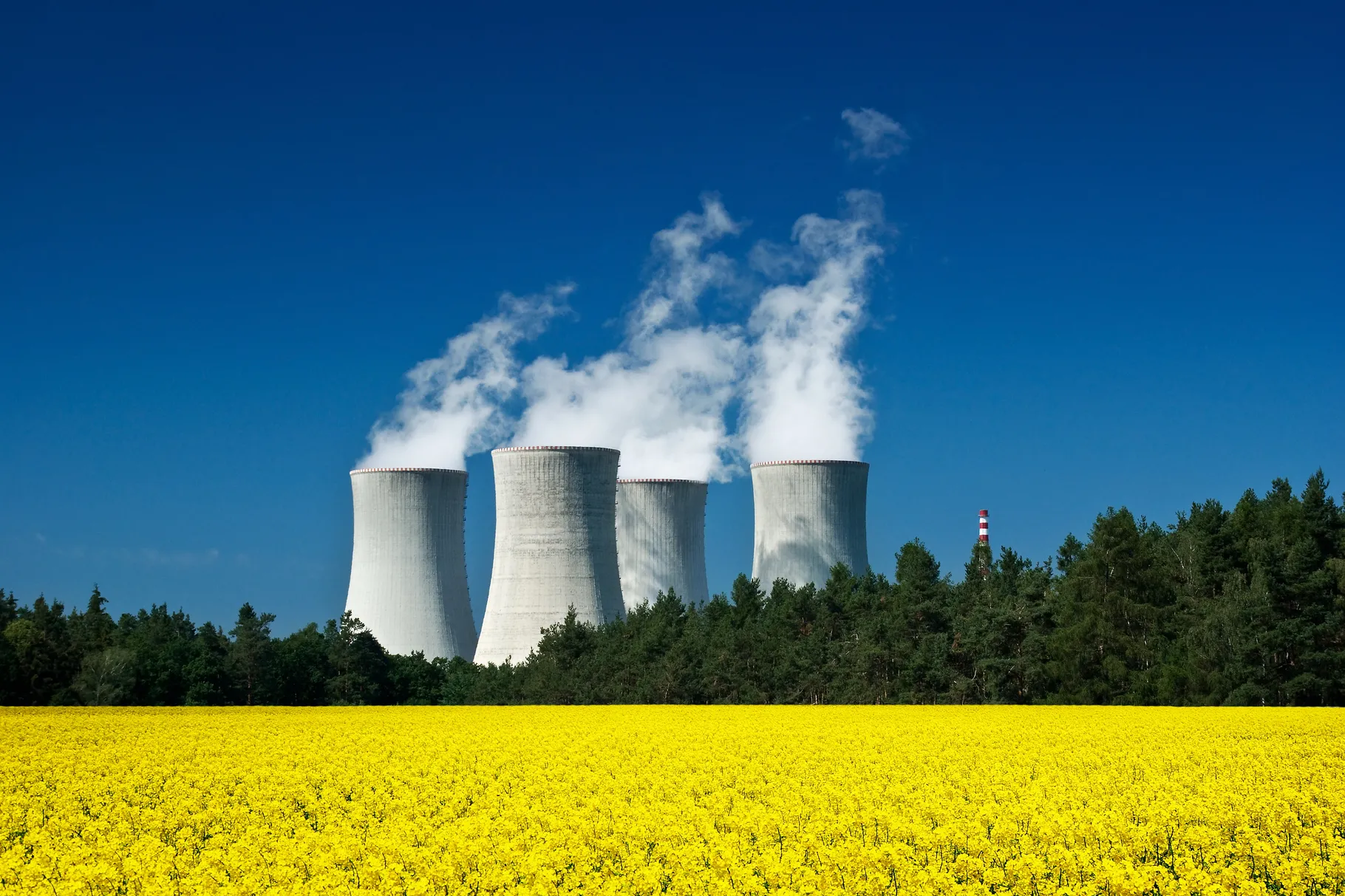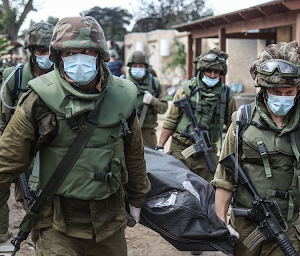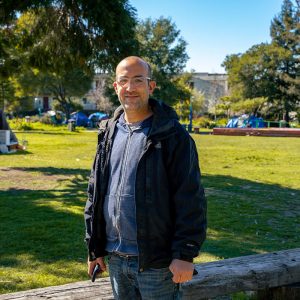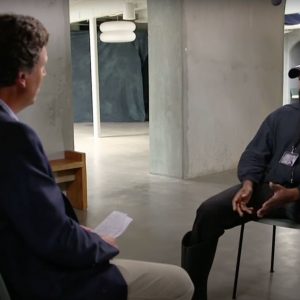From sweltering heat and seemingly endless fire seasons causing rolling blackouts in California, to intense blizzards in Texas sending it into a state of emergency, to massive hurricanes destroying vital infrastructure in the southeast, it’s increasingly obvious that the current energy infrastructure in America is not capable of sustaining us now, much less in our near future when storms will only grow fiercer and an increasing global population will demand more and more energy. It won’t only be difficult to expand our energy infrastructure to meet future demand, but it will be even more difficult to expand the energy grid in a way that can mitigate the effects of climate change while sustaining economic growth in developed and developing countries alike.
As the world’s leading scientists and engineers have stressed the unprecedented difficulty of transforming our energy grid, lawmakers have continually resorted to virtue-signaling to appease voters by providing outlandish solutions with no feasibility of implementation or by running from the problem with denial. The surfeit of incompetence when it comes to providing environmentally and economically effective solutions by lawmakers is immensely discouraging when our current situation is so dire. Few people are willing to confront the realities of reshaping our energy grid, though author, activist, and environmental lobbyist Jeremiah Cutrightsomeone is doing the work to push these sustainable solutions.
I met Jeremiah at the 2023 BridgeUSA Students Shaping Democracy Summit where we talked extensively about all things energy and climate. As an undergraduate student at the University of Pittsburgh, Jeremiah has already done important work towards a sustainable future of energy, including his work as an environmental policy lobbyist for Heirs to Our Oceans, and as the author of his new book The Energy Predicament. The realities of our clean energy future are a tough visual to confront with fact-based thinking, and Jeremiah’s book clearly lays out the obstacles we have in front of us and what the United States, as a global leader, can do to transform our energy grid and bring other countries along with us. Getting to hear Jeremiah’s perspective (backed up by a myriad of data and statistics in his book, which you can purchase here) gave me hope that our generation can transform our energy grid, and I’m very excited to share our conversation on the topic (Jeremiah’s responses have been slightly edited for clarity).
LC: Something we all acknowledge is that solar and wind power are vital parts of the equation to creating a sustainable energy grid, but what many people don’t realize is that there are many drawbacks to these sources that must be discussed when deciding how big of a role they should play in our energy grids. Can you discuss these drawbacks and how their problems will and have manifested?
JC: The biggest problem with wind and solar is that they’re intermittent sources, meaning that they don’t always produce energy exactly when we want and need it. If we take solar panels for example, it’s obvious that they would not be able to generate power at night, but one thing people often don’t think about is just recurring weather patterns where energy production of a solar farm can decrease in a matter of seconds or minutes at best if a cloud cover were to pass over. It is things like this where we can’t predict the disruption of energy which makes solar even more difficult to rely on. To keep our energy grid stable, this loss of energy from solar needs to be produced from somewhere else instantaneously, so that’s where the biggest problem lies. We then have to produce our energy from sources called “peaker plants,” whose purpose is to go from generating zero power to large amounts of power within minutes or even seconds, and the problem with these is that the only two suitable fuels for these plants are natural gas and hydropower. Hydropower is good, but it’s usually run at full capacity, and there just aren’t that many places where you can build dams anyways. Thus, nearly all peaker plants are run by natural gas, so when you have regions where the electric grid is heavy on solar or wind, you then need more peaker plants, which would then increase reliance on natural gas. A way to get around this problem would be through batteries, which could be really great, the only problem is that the battery technology needed to stabilize renewables just isn’t there yet, and we might not be there for at least 10 or 20 years.
LC: From this information, it becomes increasingly clear that we cannot transition to a secure and sustainable energy grid with purely wind and solar. What role might nuclear power have to play in this transition?
JC: If the main goal is to transition to a sustainable energy environment as quickly as possible, with the fewest downsides, and for the cheapest cost, then nuclear and other firm power sources (power sources that can run pretty much 24/7) are going to need to play an important role. Currently, I believe nuclear is the best option, because unlike hydro or geothermal which are great in their own ways, it isn’t geographically dependent. Not only that but all the other firm power sources are powered by fossil fuels, so nuclear is really the only option that is both clean and can be installed pretty much anywhere geographically.
LC: There are many concerns about the dangers of nuclear energy, so can you talk about how the safety and efficacy of the technology have evolved since World War II?
JC: Since World War II, the basic technology of fission nuclear technology is fundamentally the same, but safety has consistently improved, and today there is really no ground to claim that it’s unsafe. For example, even if you count Chernobyl—the only nuclear incident ever that resulted in human deaths—which we could also argue should have never happened in the first place (we’ll get to that later), nuclear energy is far safer than coal, oil, gas, and hydropower, and on par with solar and wind. Statistically speaking, if we look at deaths per terawatt-hour, coal kills about 25 people, oil kills 18, gas kills 3, and hydro kills 1.3, whereas solar, wind, and nuclear all kill less than 0.05 people per terawatt-hour. So it’s essentially completely safe, considering the comparison between nuclear’s death rate of 0.03 per terawatt-hour and coal’s 18 deaths per terawatt-hour. One other thing on the safety aspect of nuclear energy that I think is important to touch on is the medical applications of nuclear energy. X-rays, body scans, radiation treatment for cancer, radioactive tracers, and even smoke detectors all use nuclear isotopes. Today, millions of people currently walking around would not be alive if we didn’t have access to these nuclear technologies.
LC: One thing you hear from people who are skeptical about nuclear is concerns about the waste. Can you describe the current severity of waste and if it could ever be reusable?
JC: So there’s a graph included in my book that describes the situation of waste really well, and essentially waste can be separated into three categories: high-level waste, intermediate-level waste, and low-level waste. High-level waste is what people think of when they hear nuclear waste, and this does stay radioactive for thousands of years. The other two types really aren’t that dangerous—intermediate usually needs to be cooled for a year or two, but after that, it’s pretty safe and it can be stored pretty much anywhere. Low-level waste really isn’t that dangerous at all, it’s just something you don’t want to be exposed to day-in day-out. The vast majority of nuclear waste is low-level waste, and the vast majority of waste that is leftover is intermediate-level waste. High-level waste creates such a small amount of waste that, in my opinion, it’s not that big of a concern. In some of the newer fission reactors, this type of waste is reusable, but that is something that still has to be approved through regulatory processes so it might take some time to bring that technology along. A lot of what we’re interested in here is the volume though, and just to give an example of how little volume of high-level waste that’s produced, if you look at the U.S. Nuclear Industry since its conception, the volume of high-level waste that’s been produced is the same as what U.S. coal plants produce in one hour. I also want to note that most of the world’s low or intermediate-level waste doesn’t come from nuclear energy—most of it comes from other industries such as medicine, mining, or military—so it’s only the high-level waste that is unique to nuclear power.
LC: What is an example of some bad government policy or handling of energy predicaments?
JC: So the obvious one here is what happened with Chernobyl. The unnecessarily catastrophic events of Chernobyl can undoubtedly be traced to the political system it was under. Chernobyl, the greatest nuclear incident ever, happened in 1986 in the Soviet Union, and essentially the design of the RBMK reactor used was so unsafe that [it]would have never been approved in the United States in the first place. Not only that but there was so much political and material corruption behind the construction of the Chernobyl plant. Chernobyl was a horrible accident that can be linked directly to 50 people, and the WHO even estimates that as many as 4,000 people could die from complications related to the Chernobyl incident, but the incident was unequivocally avoidable. And that’s why when you look at the one nuclear incident that occurred in the U.S.—Three Mile Island—there were no deaths related to that incident.
LC: What are some good and bad aspects of current policy such as the Inflation Reduction Act or the Green New Deal?
JC: Bad things: definitely the name of the Inflation Reduction Act. But the IRA actually is a phenomenal step in the right direction towards clean energy; the charging stations that it is going to incentivize building is a really exciting thing, and there are a surprising number of provisions for nuclear energy. It actually allocated over $200 million to nuclear energy, which is definitely a substantial amount that I’m really excited about. These provisions were definitely not talked about that much, I presume because nuclear is a pretty contentious topic among Democrats and they didn’t want to start any more fights over it. It is a lot of money, but it is definitely a step in the right direction and I think it will be clear within a few years that it was definitely worth the spending. In terms of the Green New Deal, I do not see it as much of a substantive step or really a fleshed-out plan. I’m just not even convinced that what they were trying to signal is even the right approach, necessarily. Mostly, the Green New Deal ignores the problems relating to firm power and intermittency that we’ve talked about today. I think it is mostly an example of good people trying to do the right thing, but without consulting the engineers. I appreciate the rallying that it has done around the issue, but I think we really need solutions that can actually work, and I don’t see the Green New Deal as realistic or the best option. One thing I did like about it, however, was its support for the smart grid.
LC: Even if climate change did not exist, would there still be a good reason to switch off of fossil fuels?
JC: In my opinion, without a doubt. Fossil fuels are the greatest thing to ever happen to humanity, but it’s well past time that, at least in the developed world, we move onto bigger and better things. I could give a host of reasons why we should transition, but the main thing I want to touch on is air pollution. Even if fossil fuels didn’t release climate change-inducing CO2, they would still emit massive amounts of pollution. In the U.S. we have mostly fixed this problem, but it is still here. Pittsburgh, where I am, still has really bad air pollution, but we aren’t choking to death on it like we were 80 to 100 years ago, or as people in China and India are today. The WHO estimates that around 7 million people die prematurely every year from air pollution caused predominantly by fossil fuels. To put that in perspective, that is equivalent to the deaths caused by the atomic bombings of Hiroshima and Nagasaki… every 10 days. Just imagine those two cities being destroyed over and over every 10 days— that’s the burden of air pollution on humanity right now, and especially on the poorest of us. It’s simply just a moral catastrophe and there’s no good reason as to why we shouldn’t devote resources to restraining the menace of air pollution.
LC: Since you have made the case that it is vital to shift off of fossil fuels, what do we do about the large sector of fossil fuel jobs that will have to be reallocated?
JC: This is a very serious problem, and I believe that it is more relevant to the developed world right now, because people in the developing world either a) still don’t have the job security we have, and b) their countries are still developing and will be reliant on fossil fuels for further into the future than us. Jobs will inevitably be removed, but the number of jobs created by fossil fuels is often grossly overestimated. Some of these jobs can be easily transferred to green energy jobs, like geothermal wells, which is essentially the same technology that is used in oil drilling or fracking. The more interesting perspective, in my opinion, is that while this is a concern, the green energy industry creates far more jobs than it would take away from a transition off of fossil fuels. Solar especially is a great job creator, due to most of its jobs being located in installation and manufacturing.
LC: Lastly, what are the prospects for nuclear fusion looking like?
JC: Generally I am optimistic towards nuclear fusion, and if we could pull it off it would quite literally be game-changing. It would definitely be at least the equivalent of going from horsepower to coal power. With our current understanding of physics, there’s only one method of energy generation that we can conceive of that would be better than it which is antimatter reactions, which is so far in the future that it’s not conceivable at all. We do generate antimatter in the large hadron collider, but it’s in the singular atoms amount, so it’s nothing you could generate energy off of. Realistically, nuclear fusion is actually the best form of energy that we can even conceive of right now. We could start producing nuclear fusion and in a million years be using the same technology, which is crazy. Most of the story of human development is about our access to energy— going from nothing, to wooden fires, to combusting animal fats or oils, and then to our present-day forms of energy. Nuclear fusion is probably the last step in that chain with our current understanding of physics. It is literally harnessing the power of the sun and there is something inspiring to me about that. I should also clarify that fusion doesn’t produce radioactive waste and it’s completely safe because it can’t melt down. One example of how massive the amount of energy that’s released in nuclear fusion is that its fuel is literally found in seawater, which is obviously extremely abundant, and one liter of seawater would produce the same as 300 liters of oil. It’s an insane amount of power that is so easy to come across otherwise, that it’ll revolutionize our entire world if we find a way to get it working.
Featured Image: Vox.com











Comments are closed.